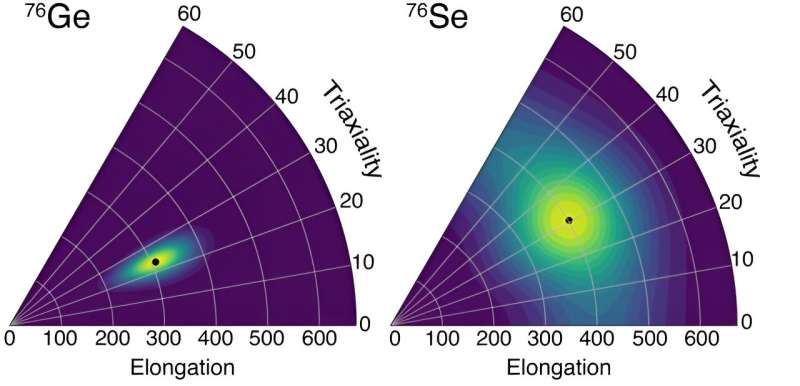This article has been reviewed according to Science X's editorial process and policies. Editors have highlighted the following attributes while ensuring the content's credibility:
fact-checked
peer-reviewed publication
trusted source
proofread
Unlocking the secrets of the universe through neutrinoless double beta decay

The discovery that neutrinos have mass was groundbreaking. However, their absolute mass remains unknown. Neutrinoless double beta decay experiments aim to determine whether neutrinos are their own antiparticles and, if so, provide a means to determine the mass of the neutrino species involved.
Determining the mass through neutrinoless double beta decay experiments using 76Ge is only possible if scientists understand the properties of the decay of 76Ge into selenium-76 (76Se). A study published in Physical Review C provides key input for these kinds of experiments.
Germanium-based neutrinoless double beta decay (0νββ) experiments hold great promise for unraveling the mysteries surrounding neutrinos. The observation of this rare decay process not only offers the prospect of determining the nature of these enigmatic particles, but also the determination of their mass, provided the probability governing the decay is reliably known.
This probability is not a direct experimental observable and thus can only be determined theoretically. Although significant discrepancies between probability values calculated by different theoretical methods remain, efforts to understand and minimize such differences have progressed remarkably. Among the structure effects studied, research has shown that deformation (deviation from sphericity) and hence the nuclear shape have a significant effect on these decay probability values.
Specifically, scientists expect a low probability when the parent and daughter nuclei assume different shapes but higher probability for nuclei with similar deformations. In addition, scientists find a maximum value when they assume spherical symmetry in both parent and daughter nuclei.
Research on the structure of 76Ge, led by physicists at the Triangle Universities Nuclear Laboratory (TUNL), has found that the 76Ge (parent) and 76Se (daughter) have different shapes.
In particular, the experiment showed that, while the ground state of 76Ge exhibits rigid triaxial deformation, that of 76Se is characterized by a soft triaxial potential. These conclusions are important for calculations aiming to determine the probability relevant for 76Ge 0νββ decay.
More information: A. D. Ayangeakaa et al, Triaxiality and the nature of low-energy excitations in Ge76, Physical Review C (2023). DOI: 10.1103/PhysRevC.107.044314
Journal information: Physical Review C
Provided by US Department of Energy





















